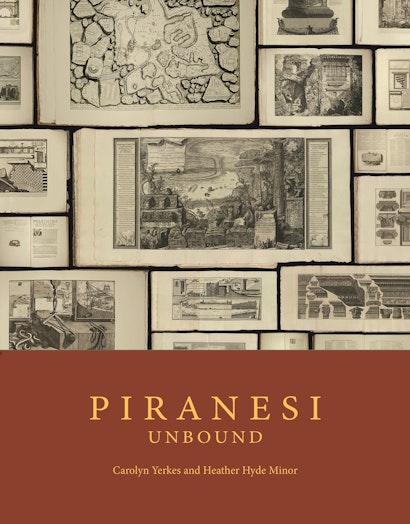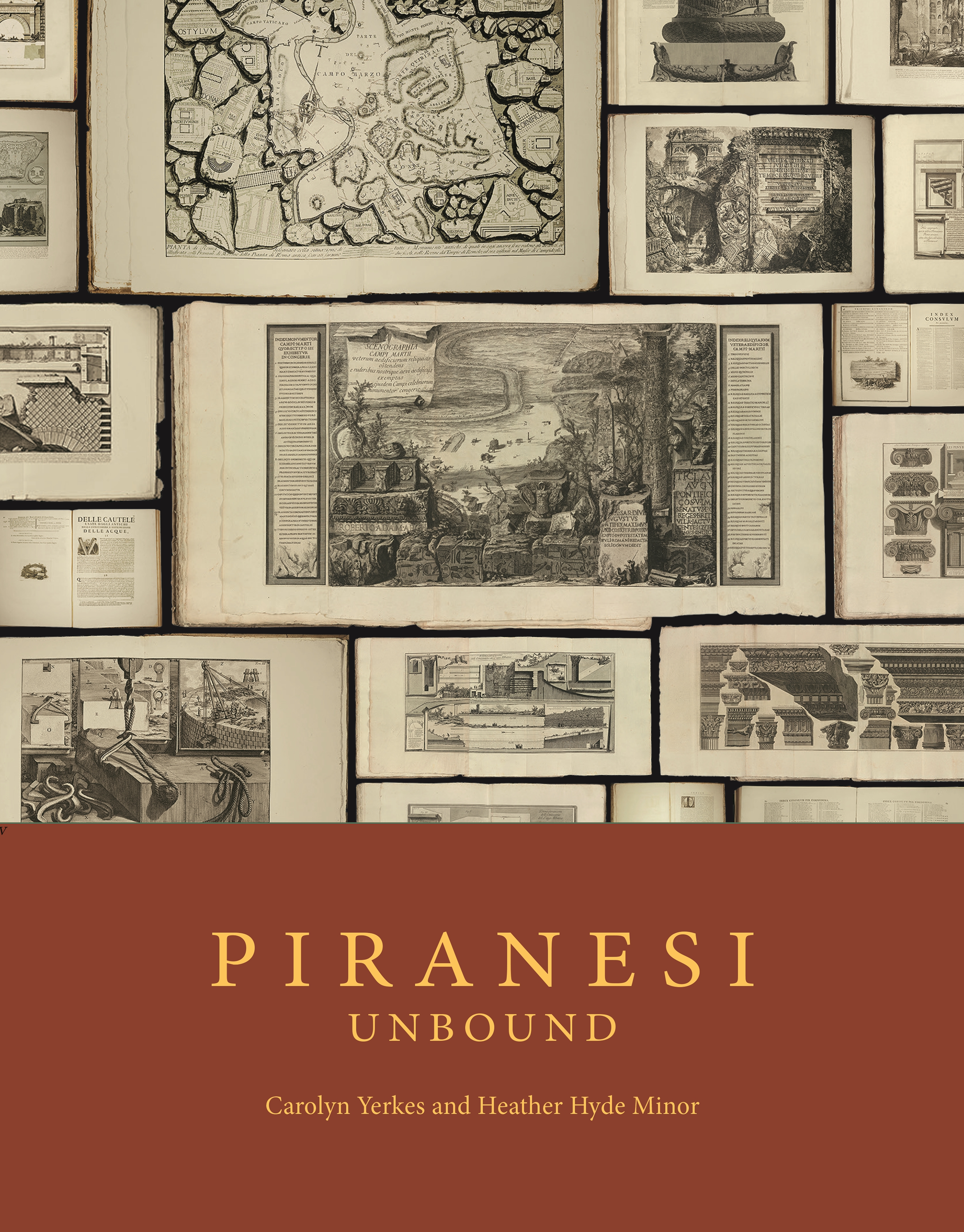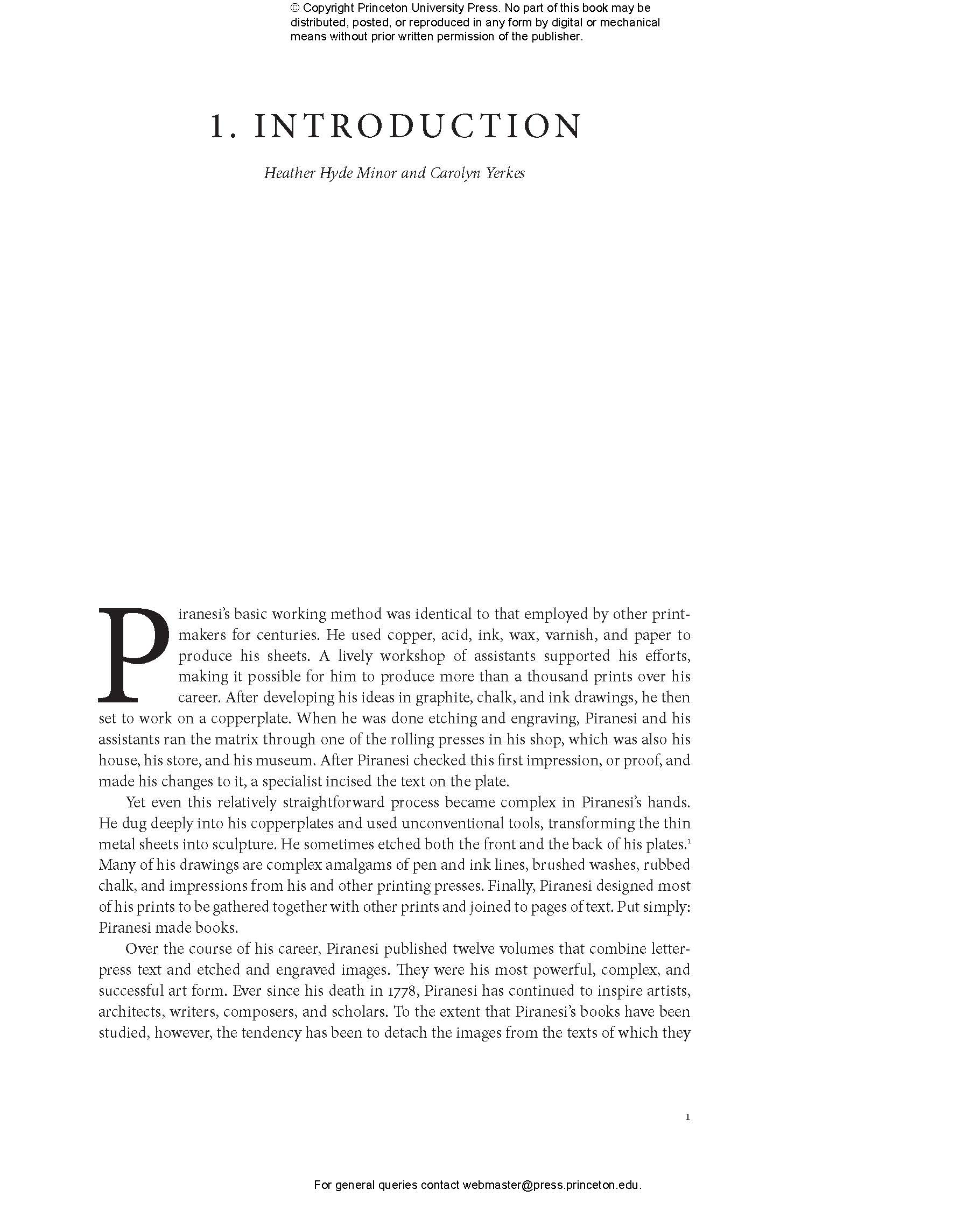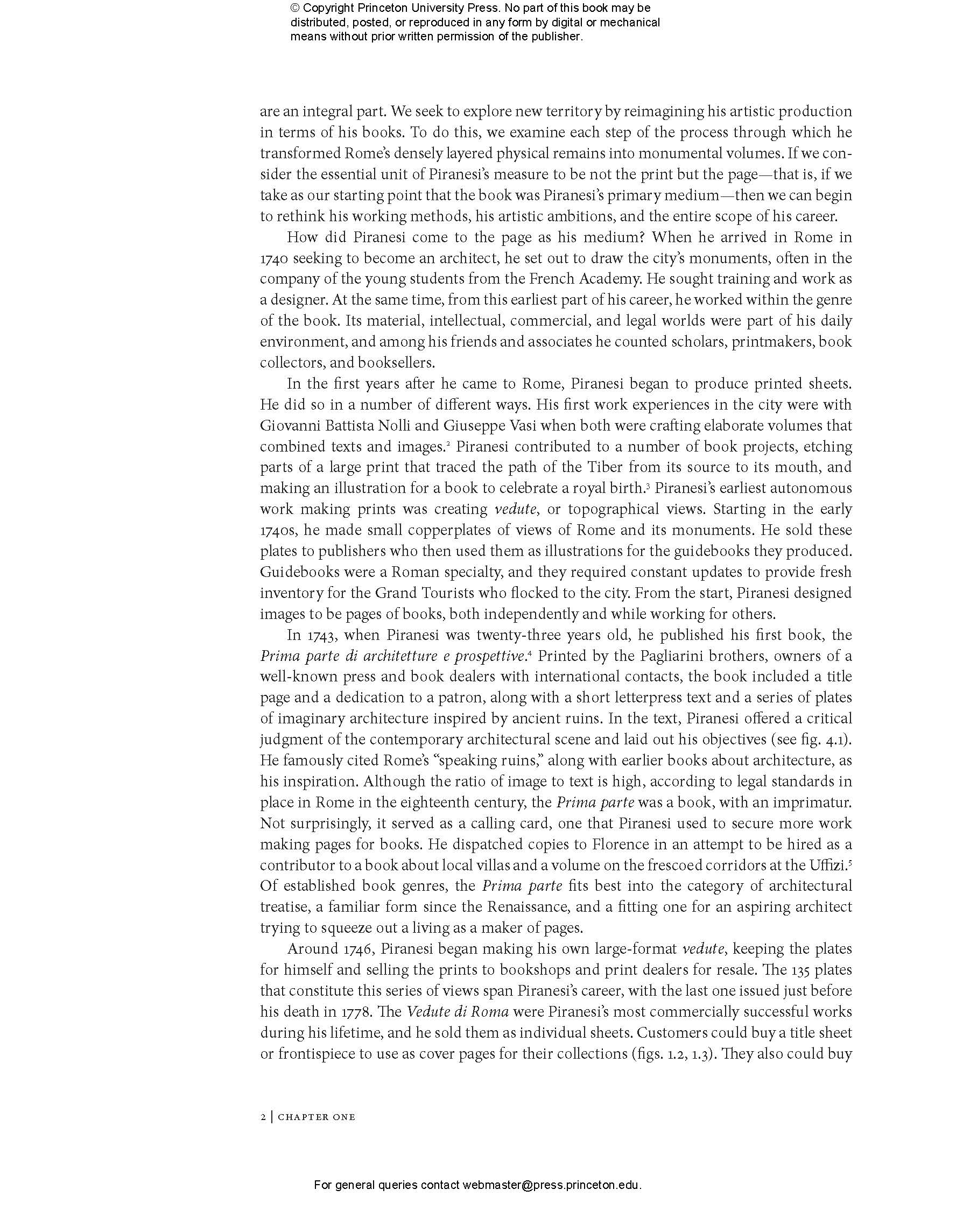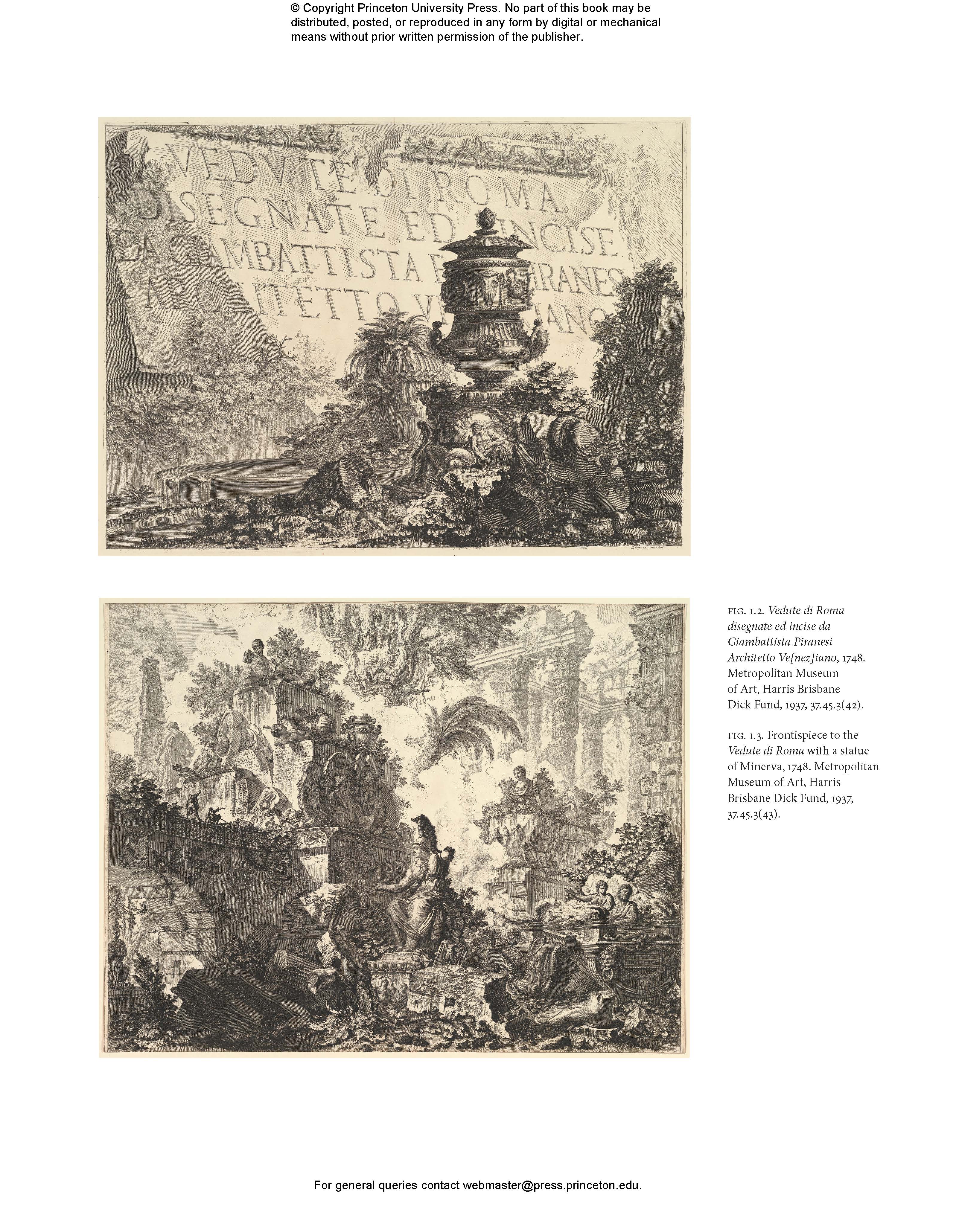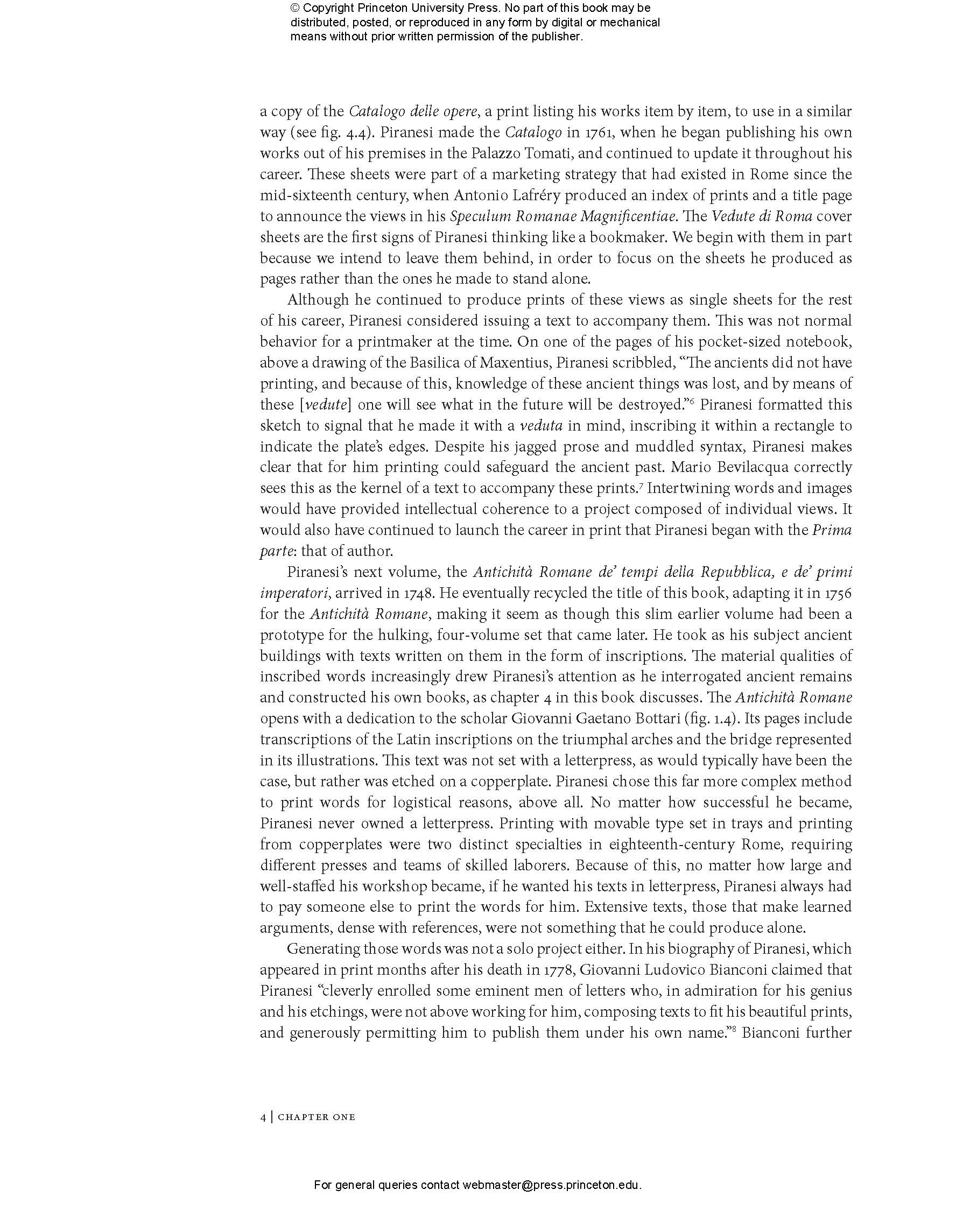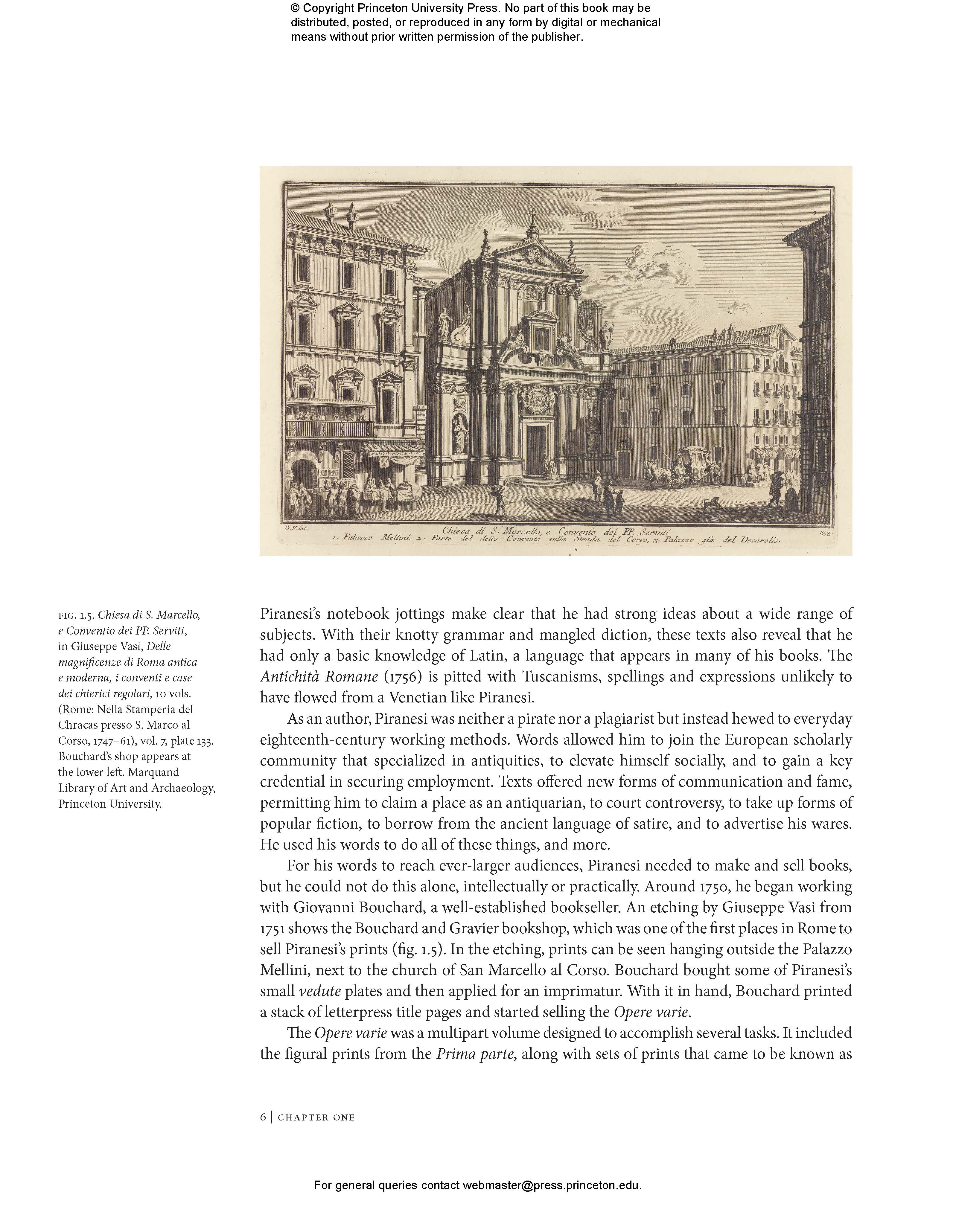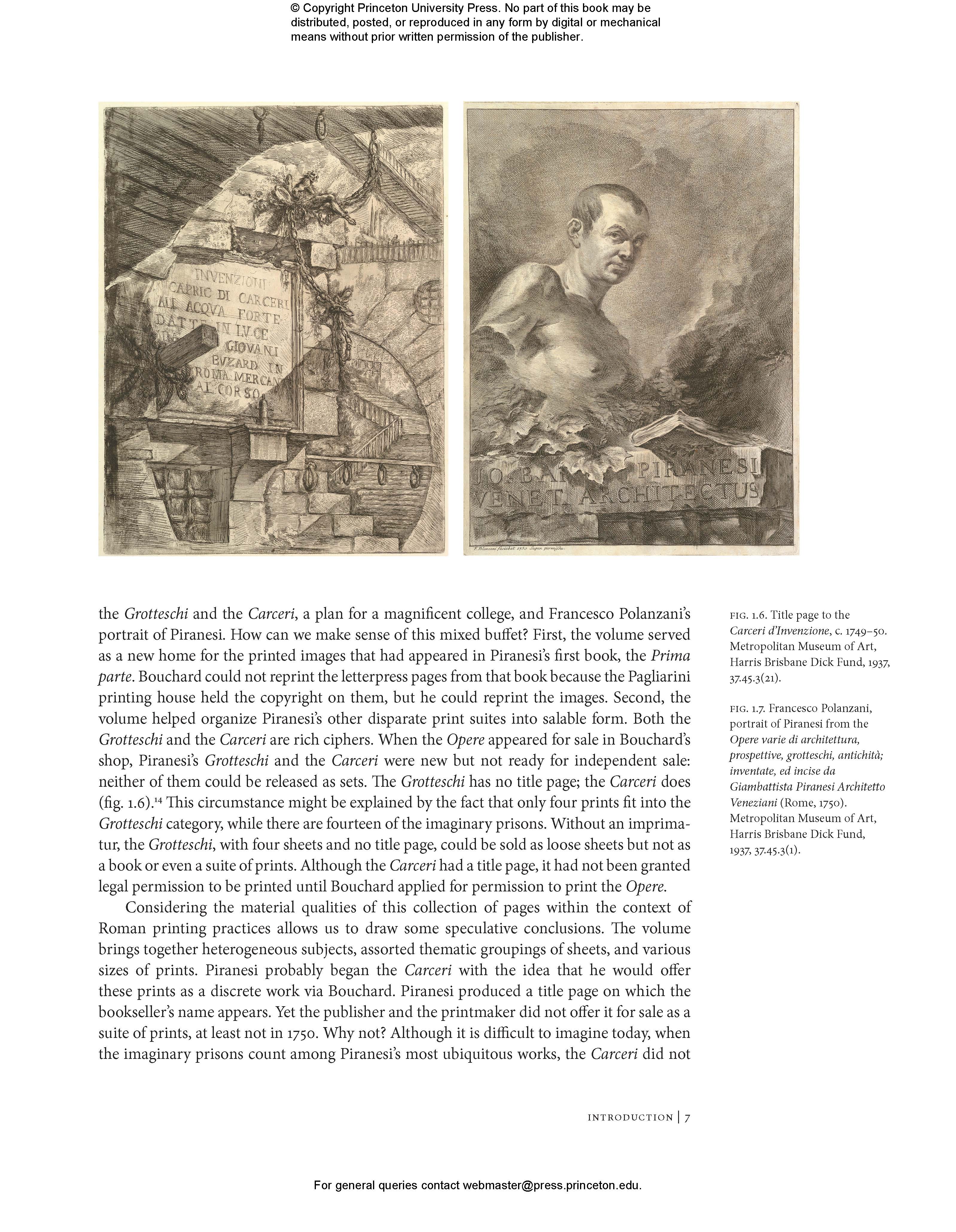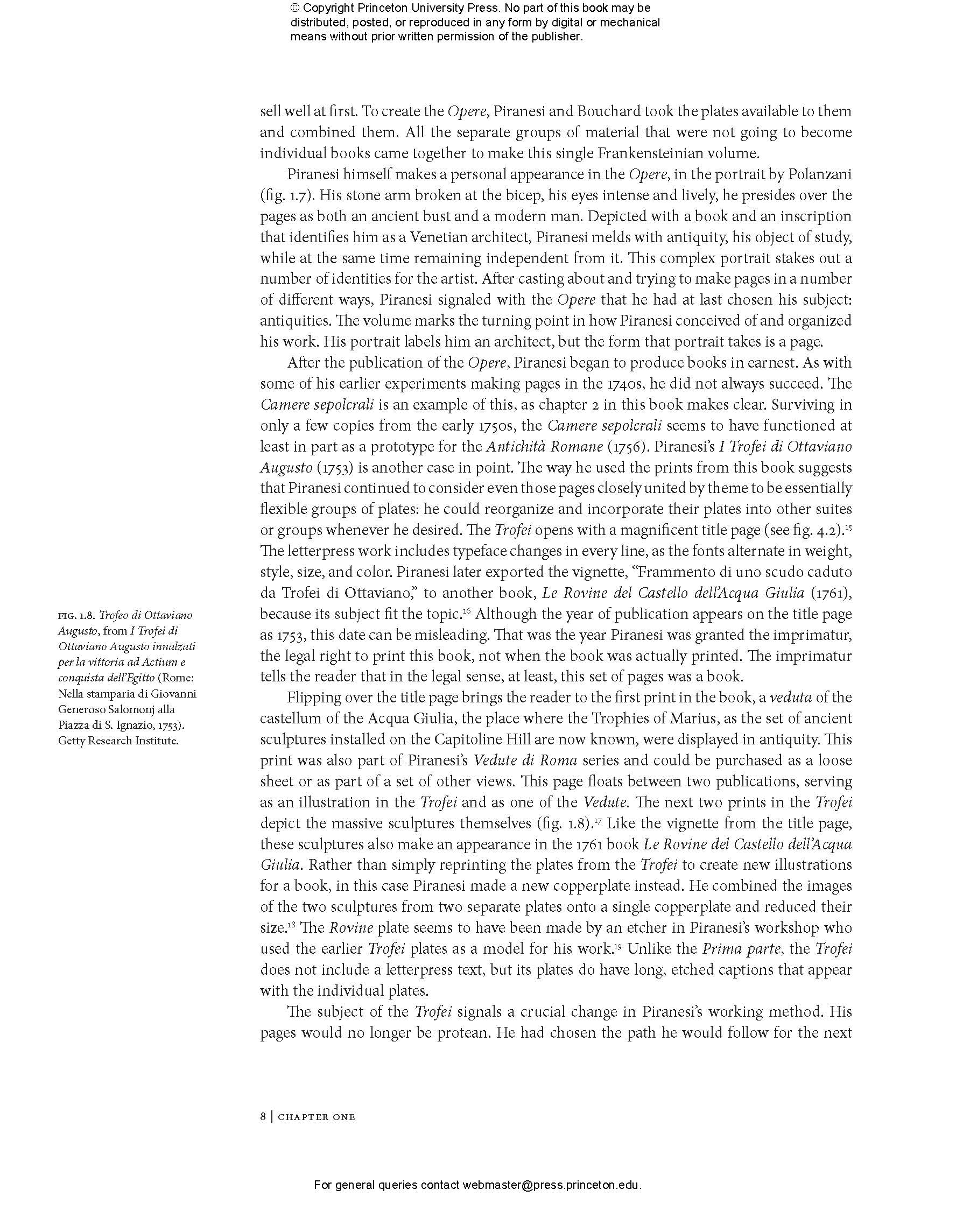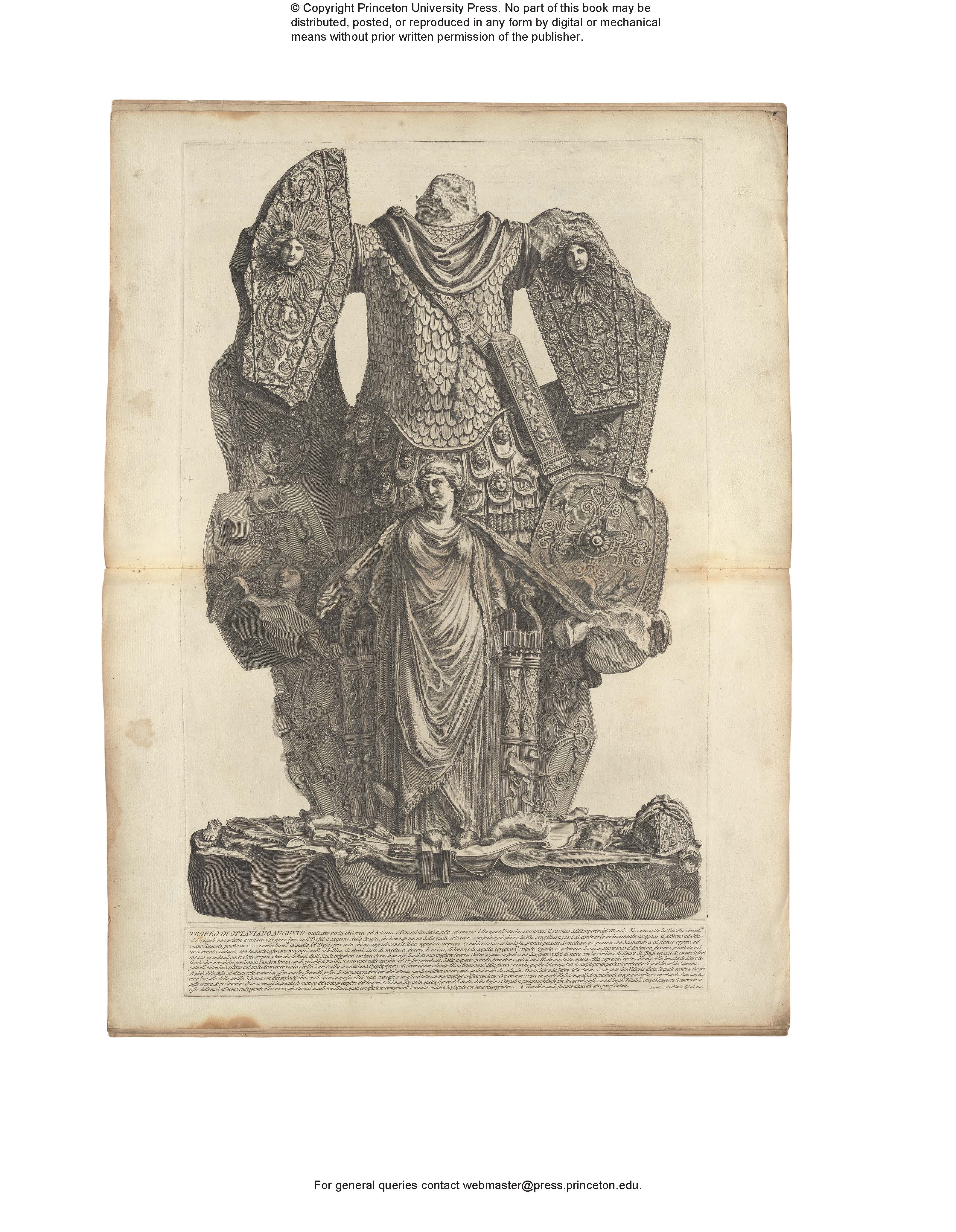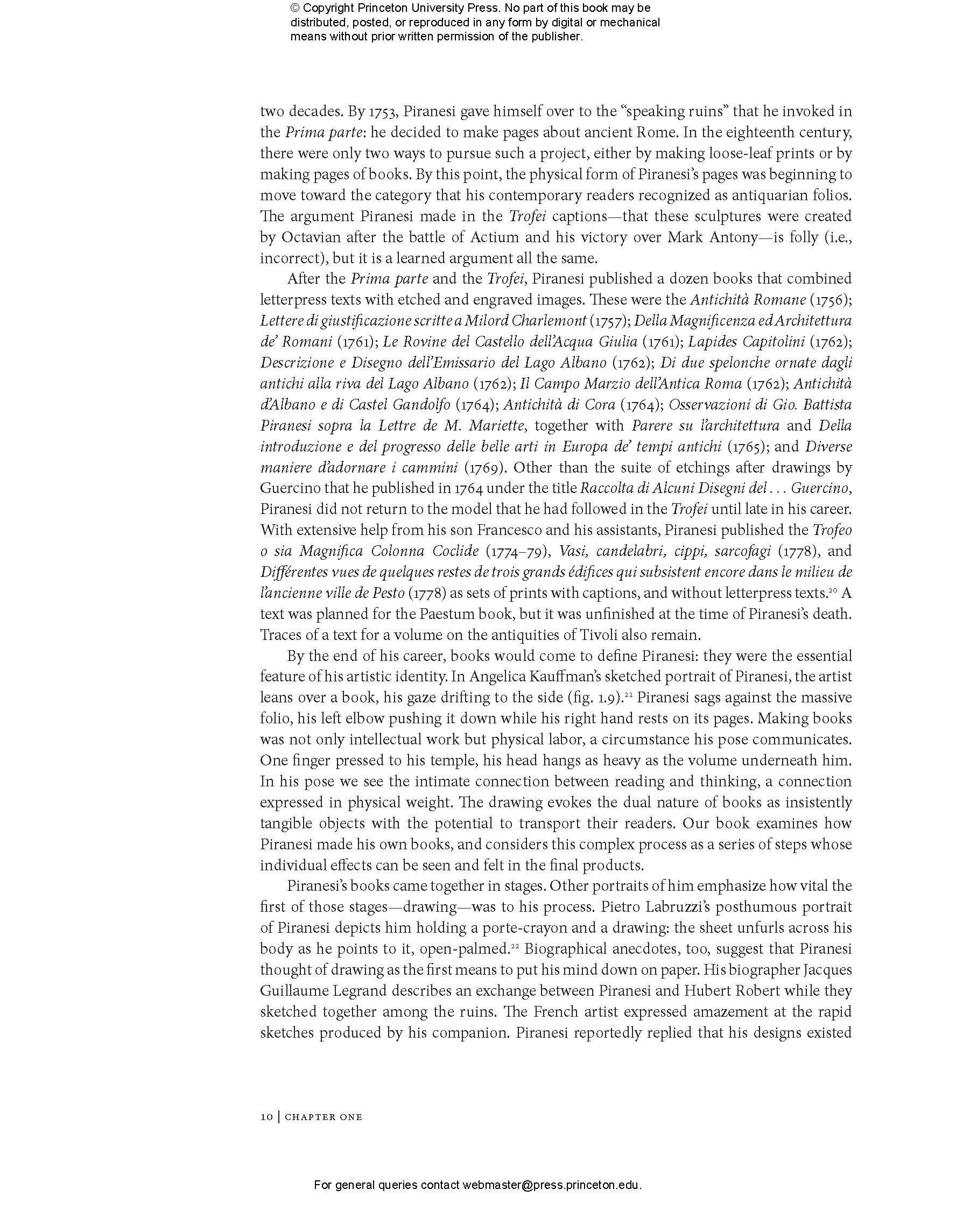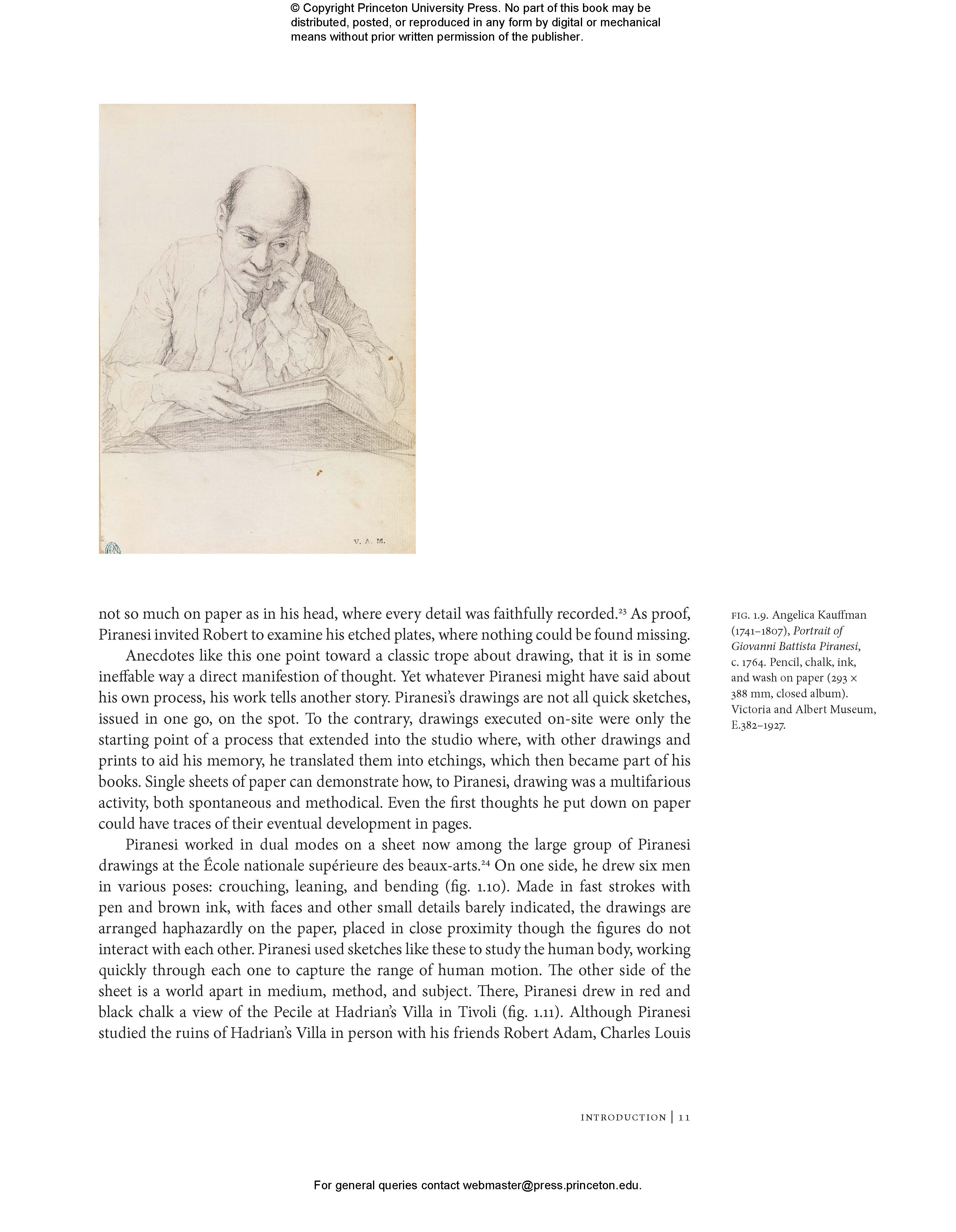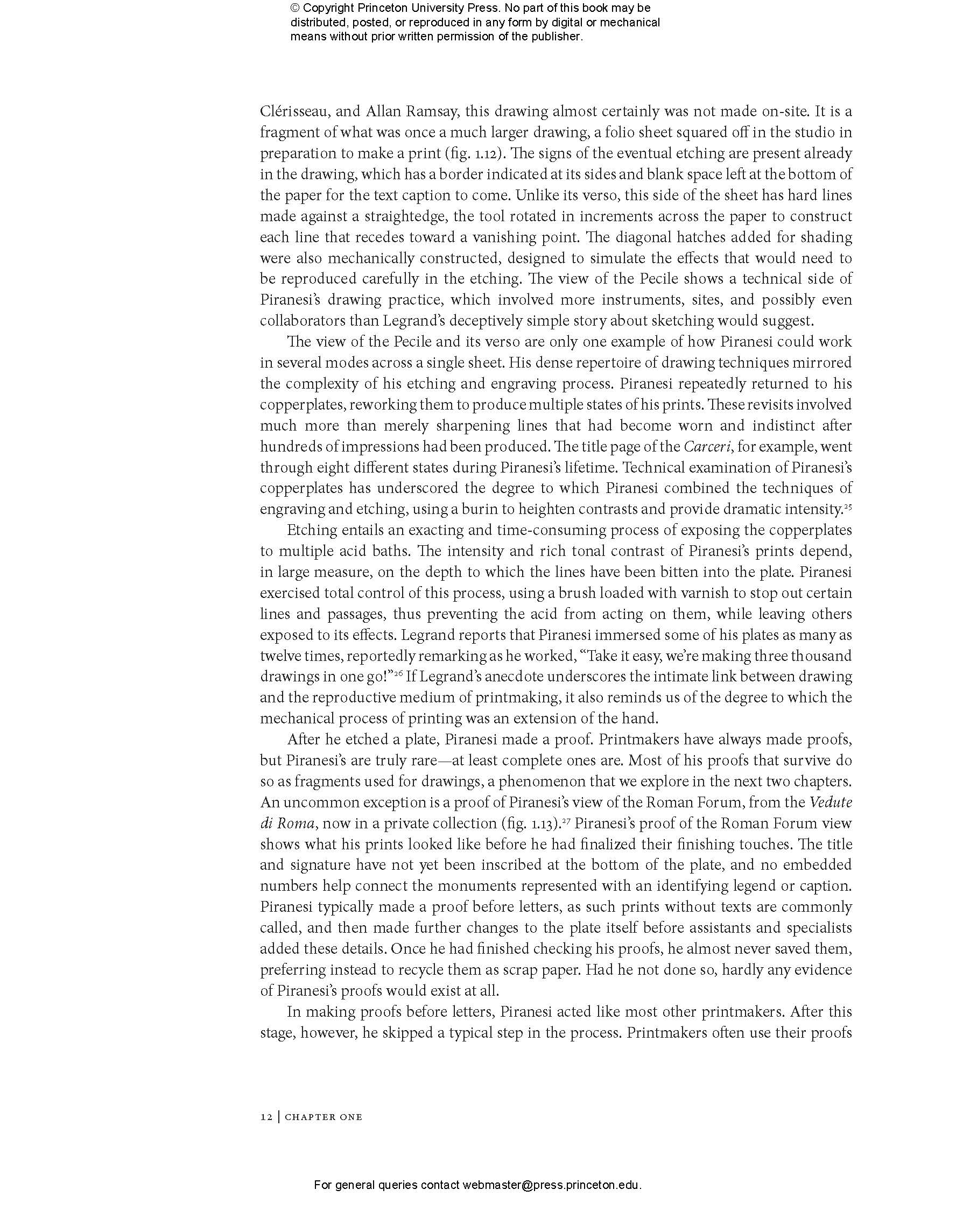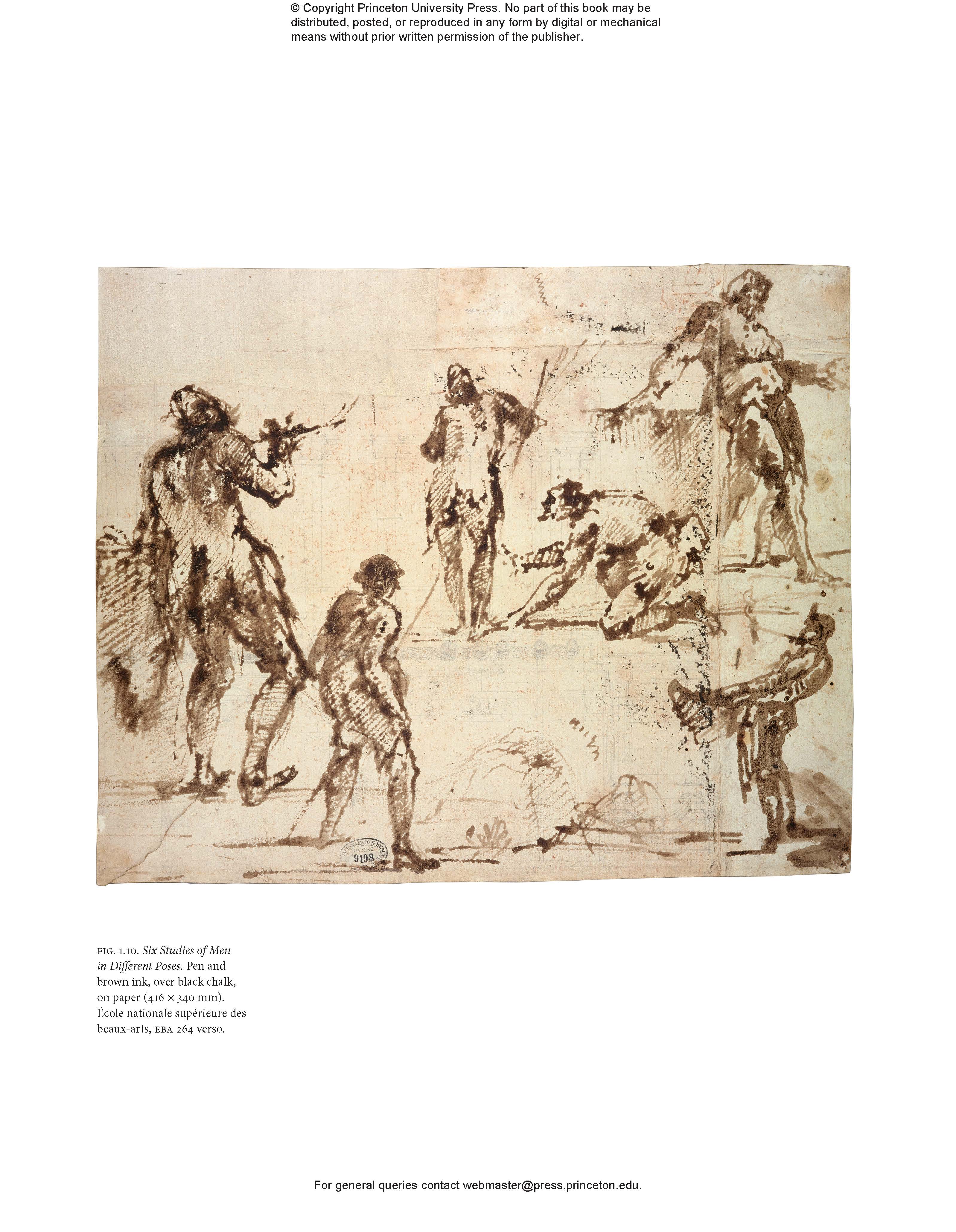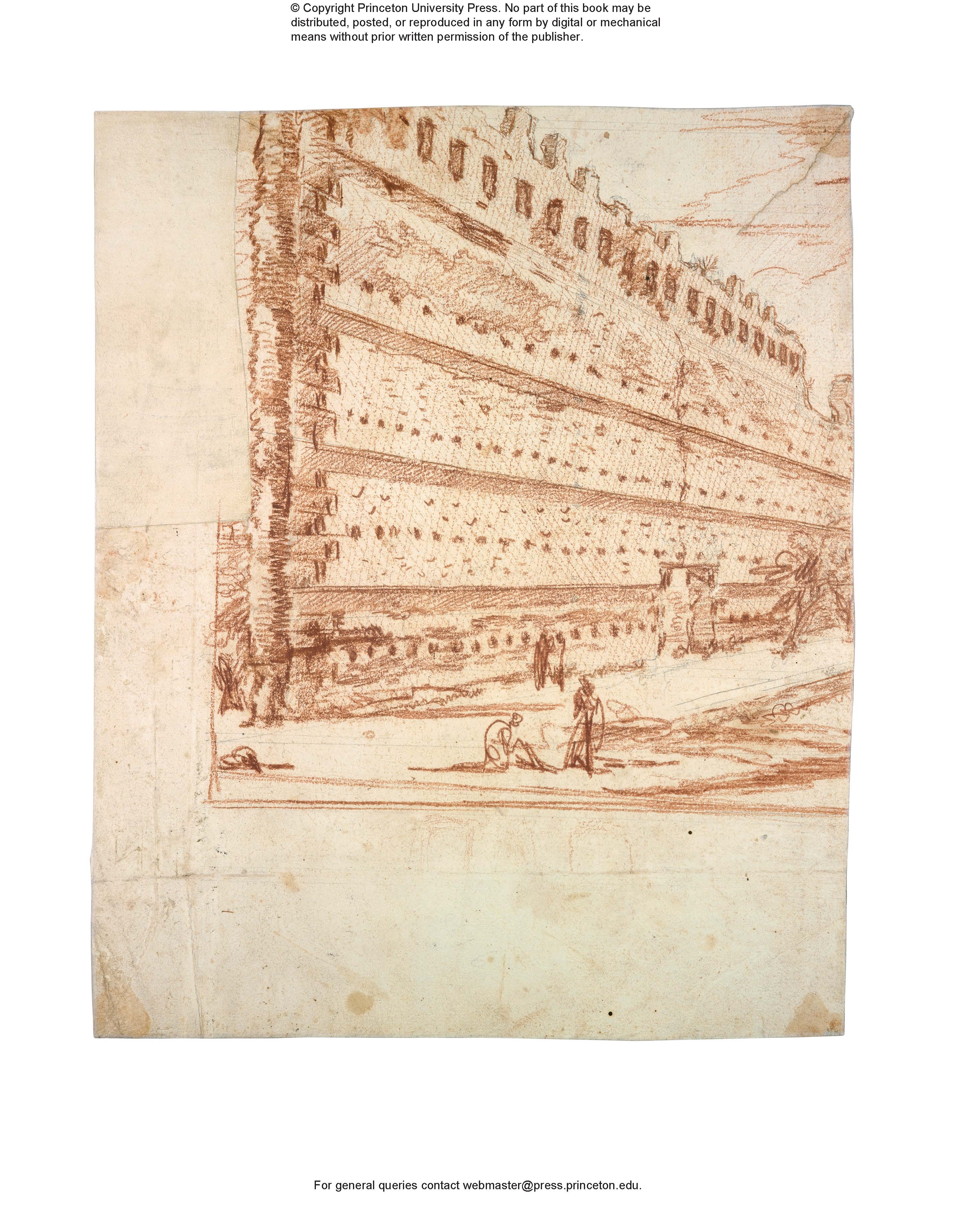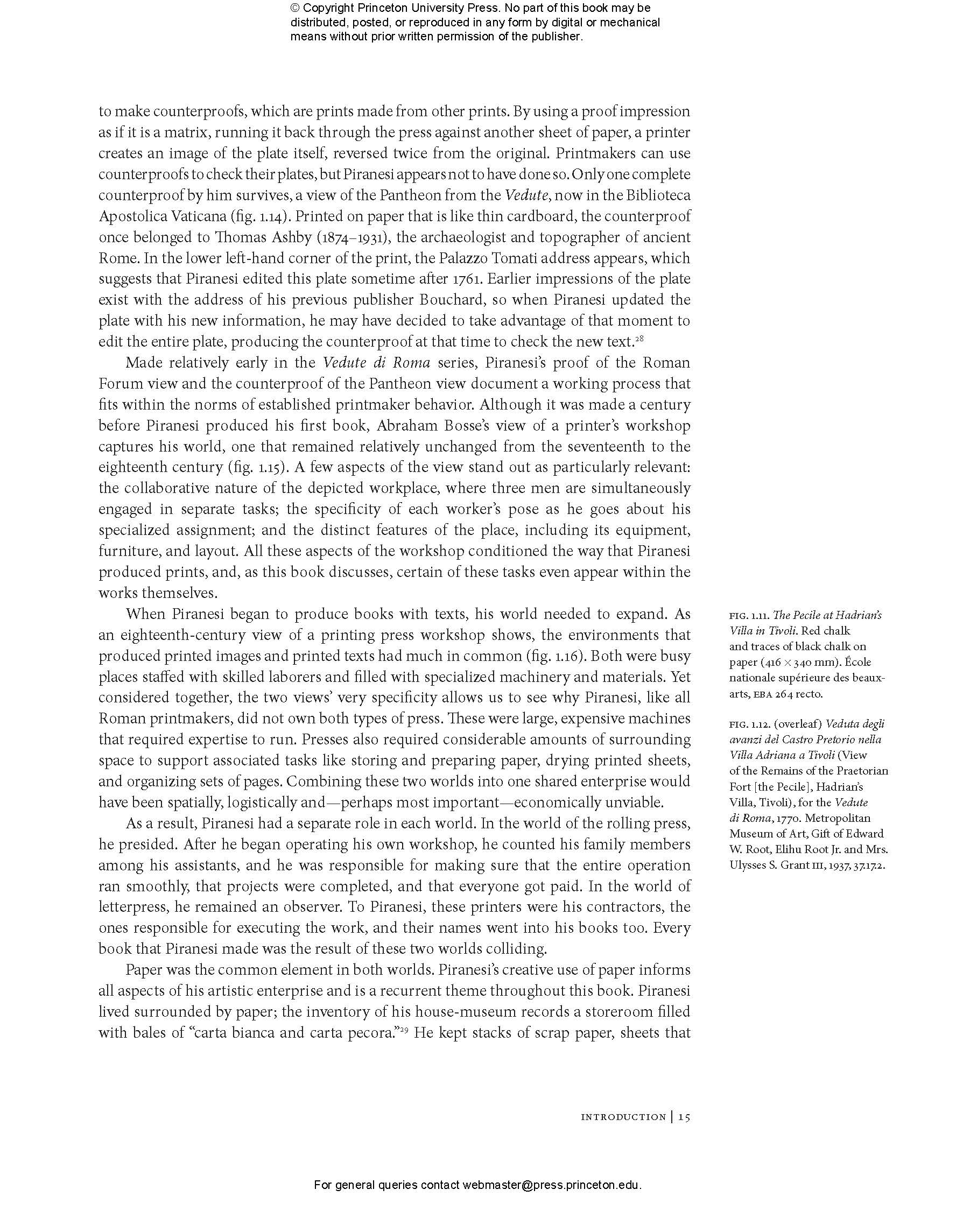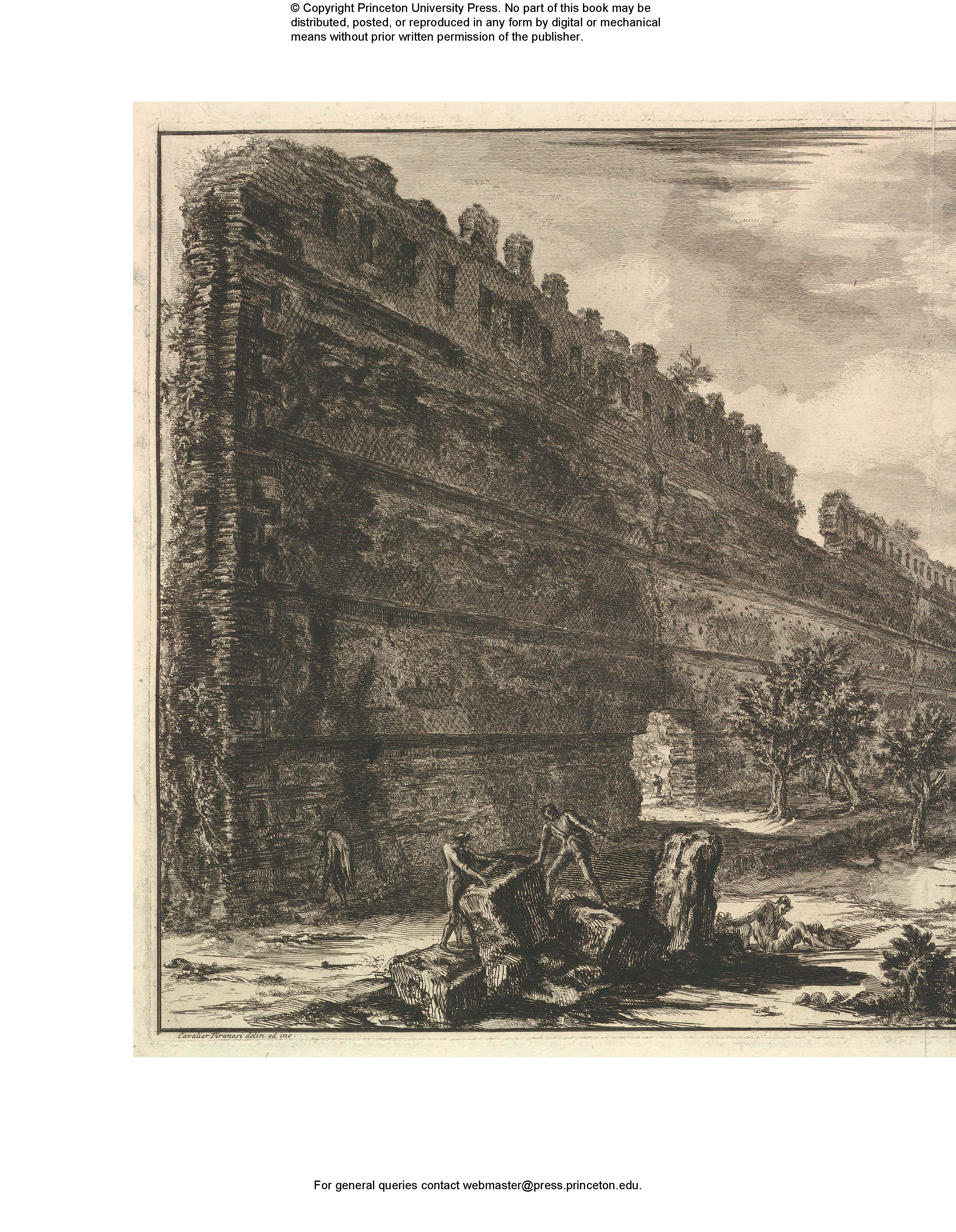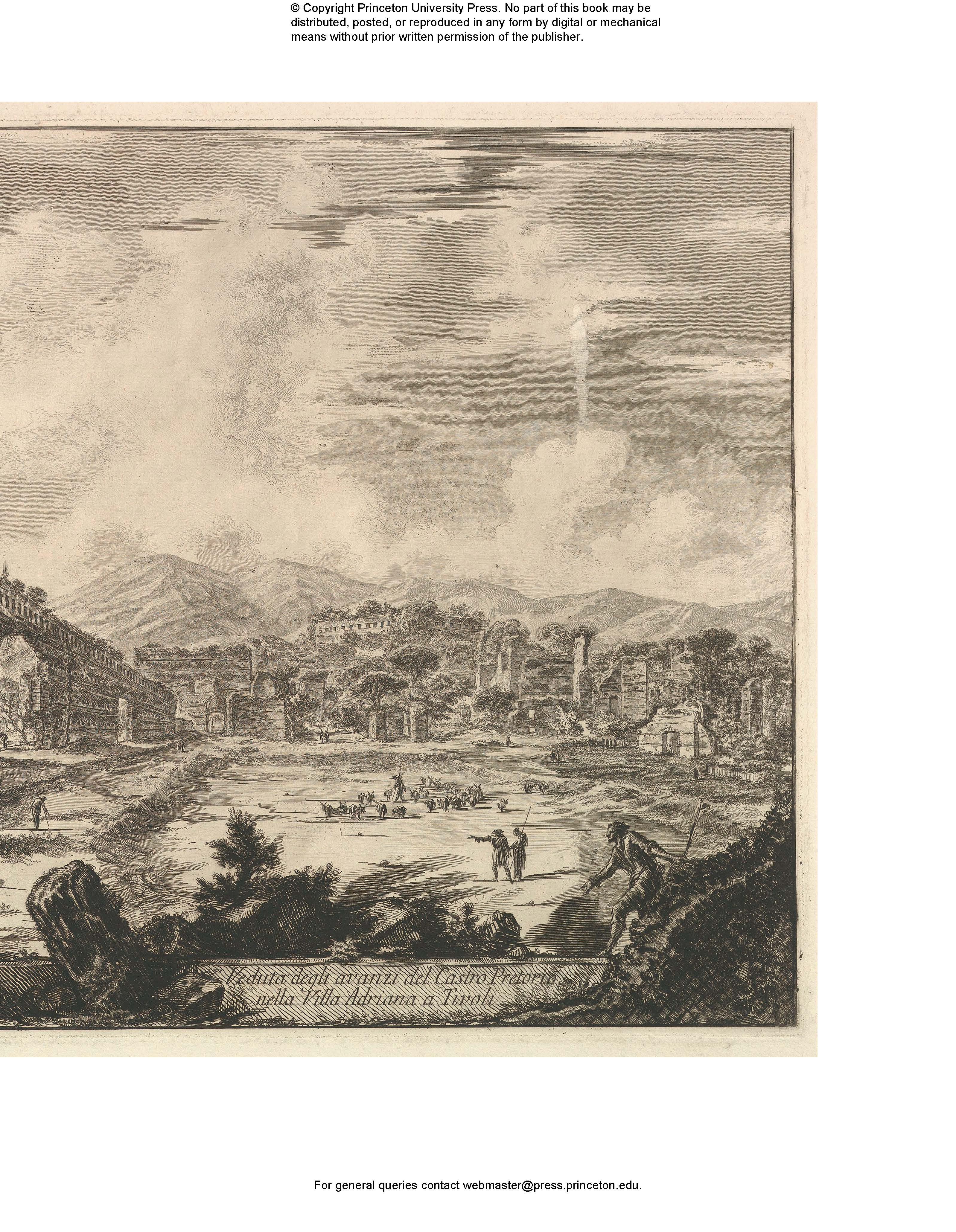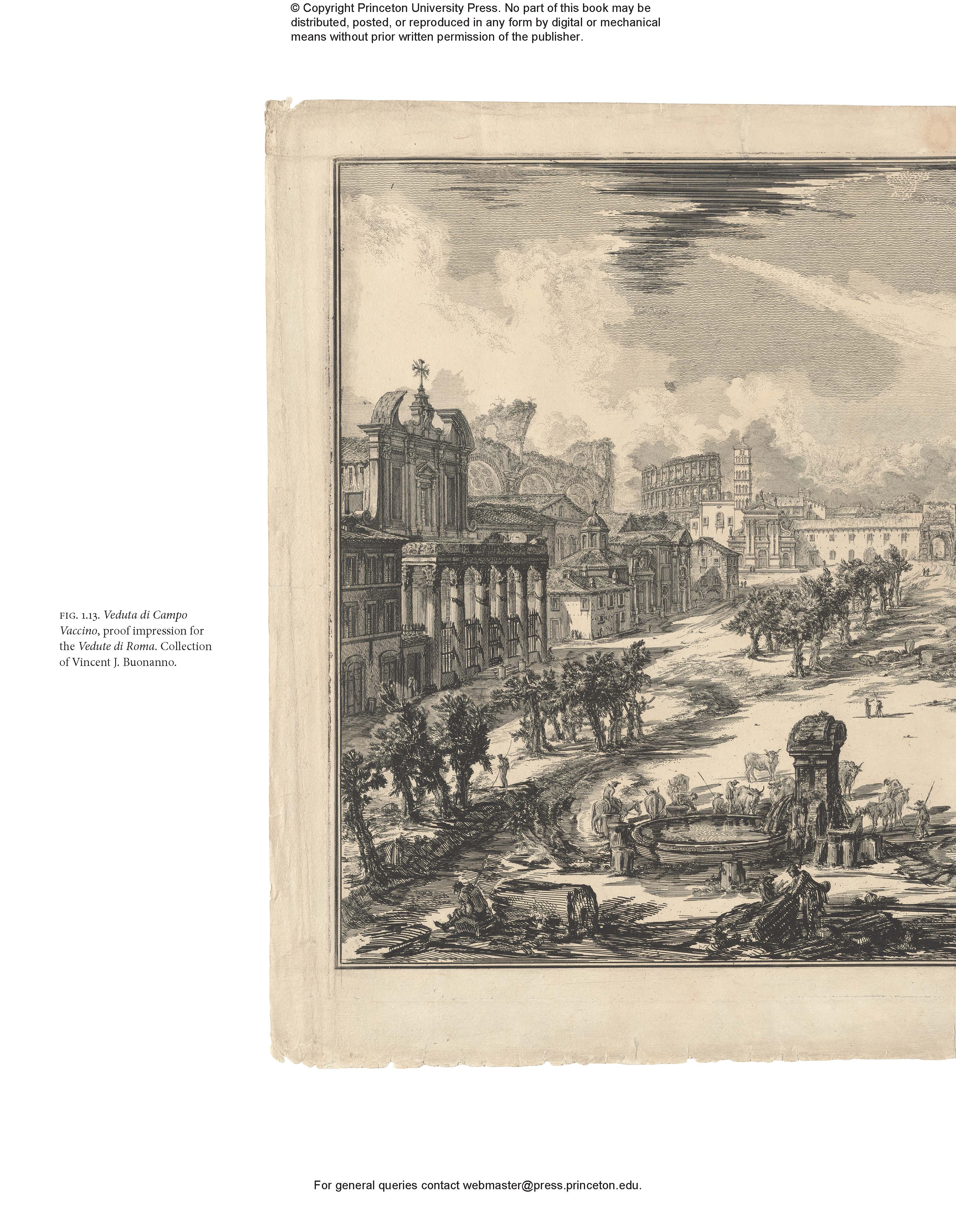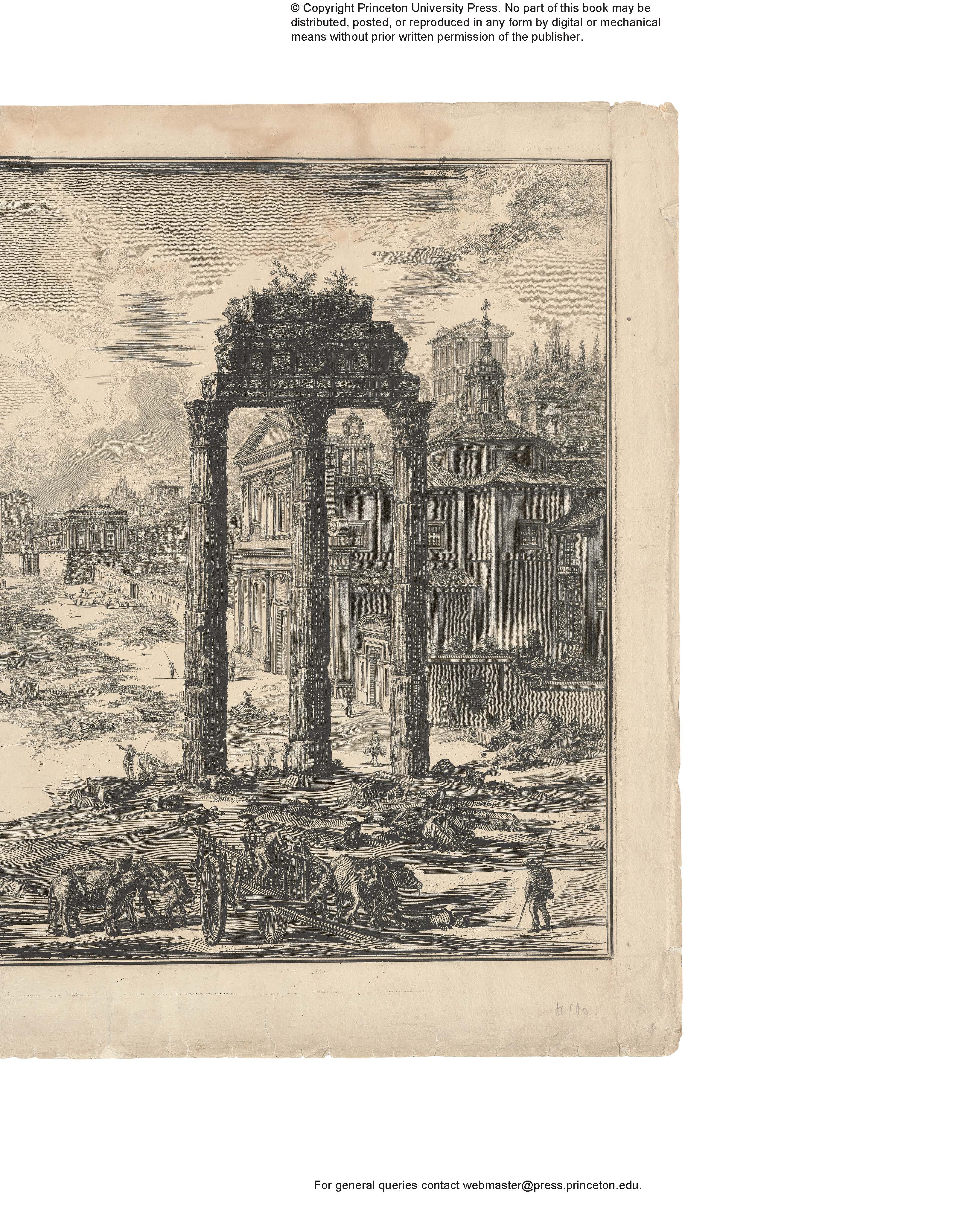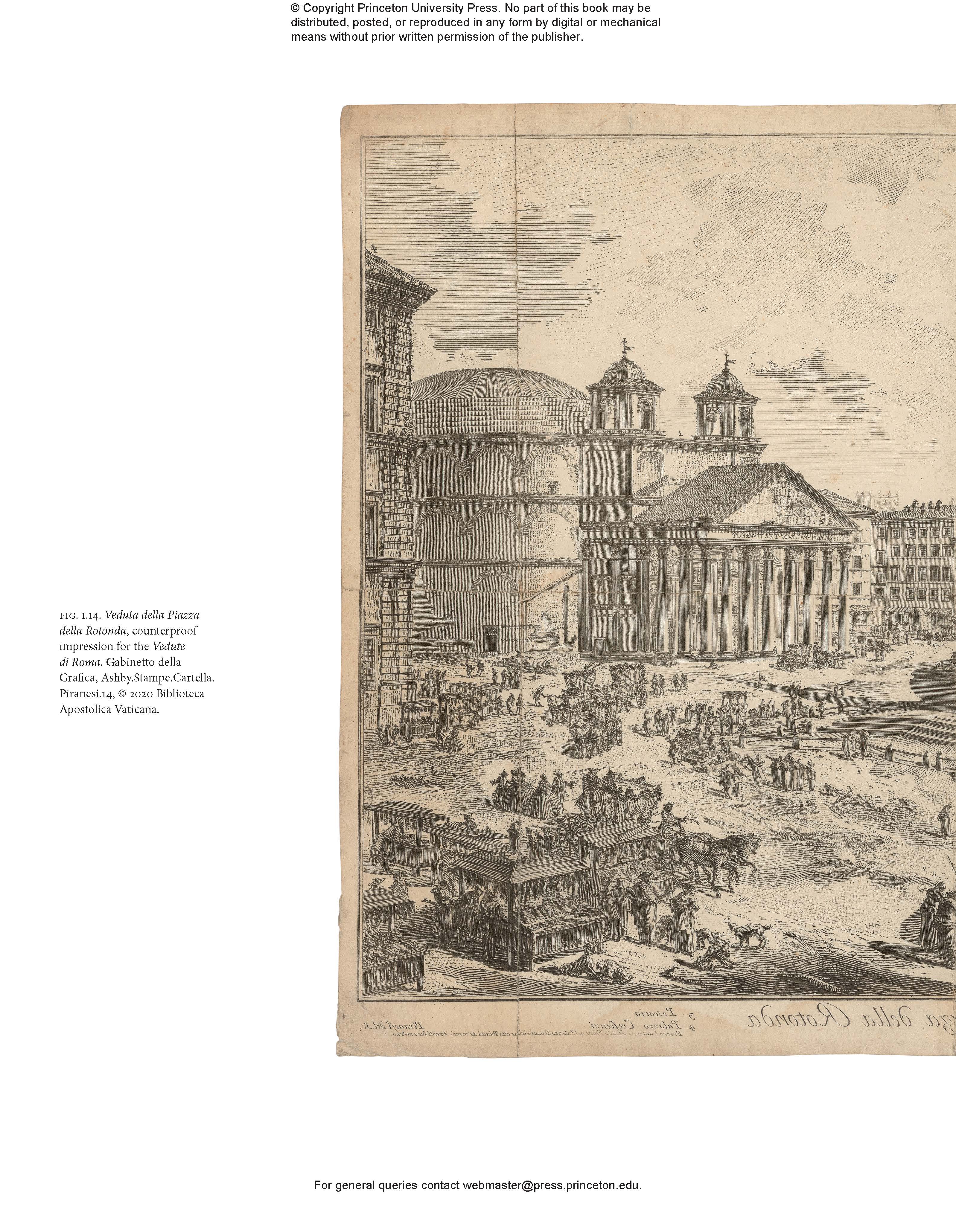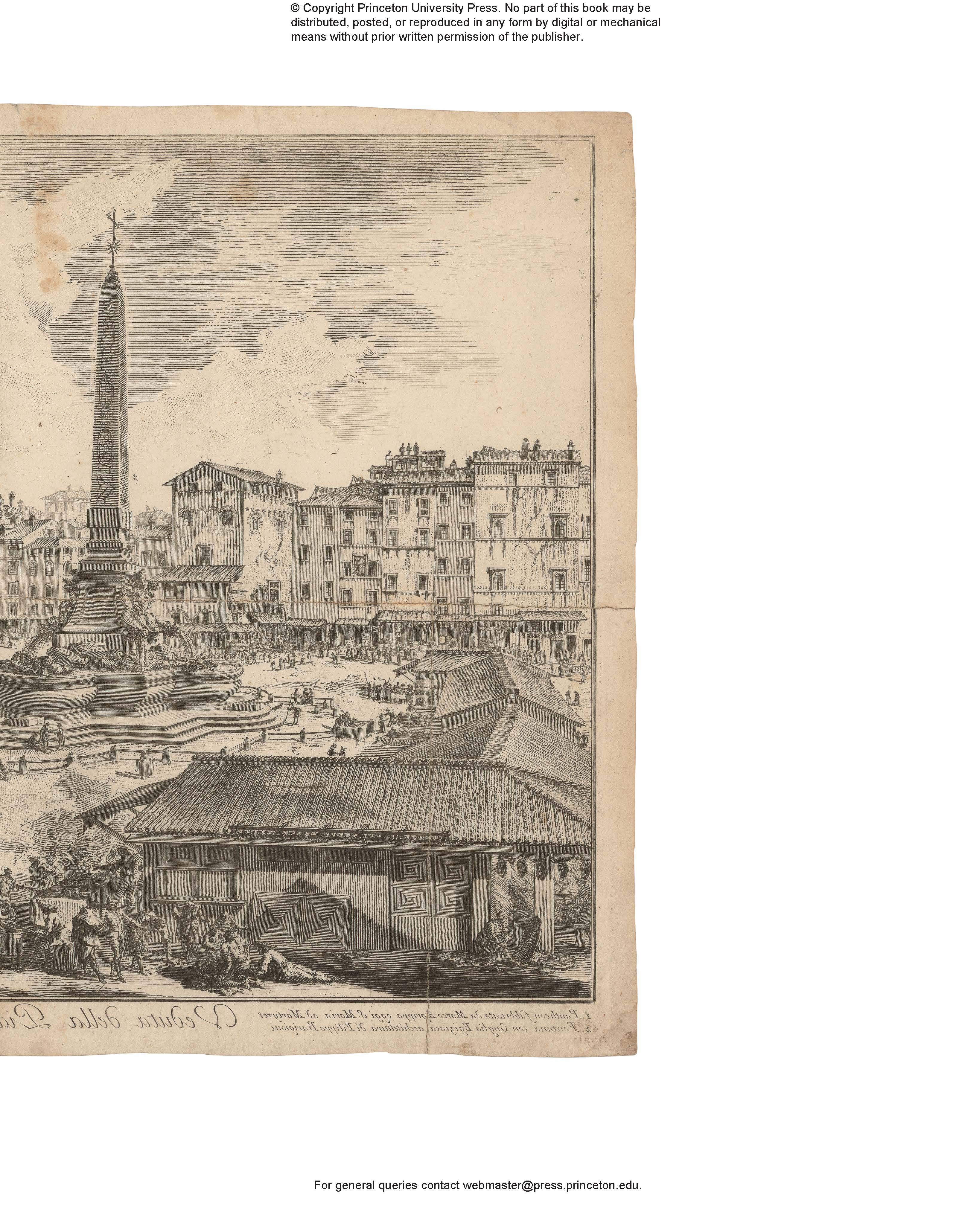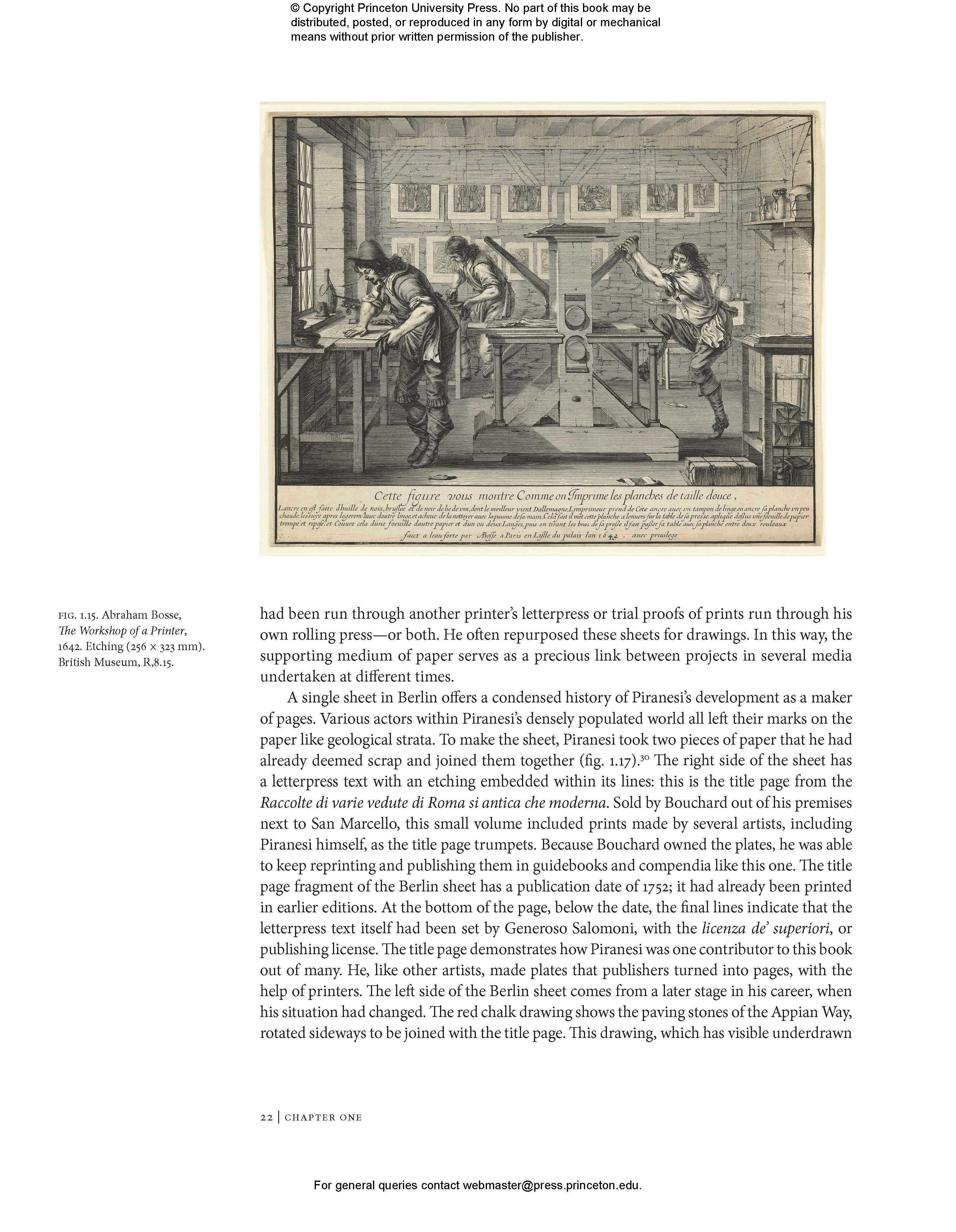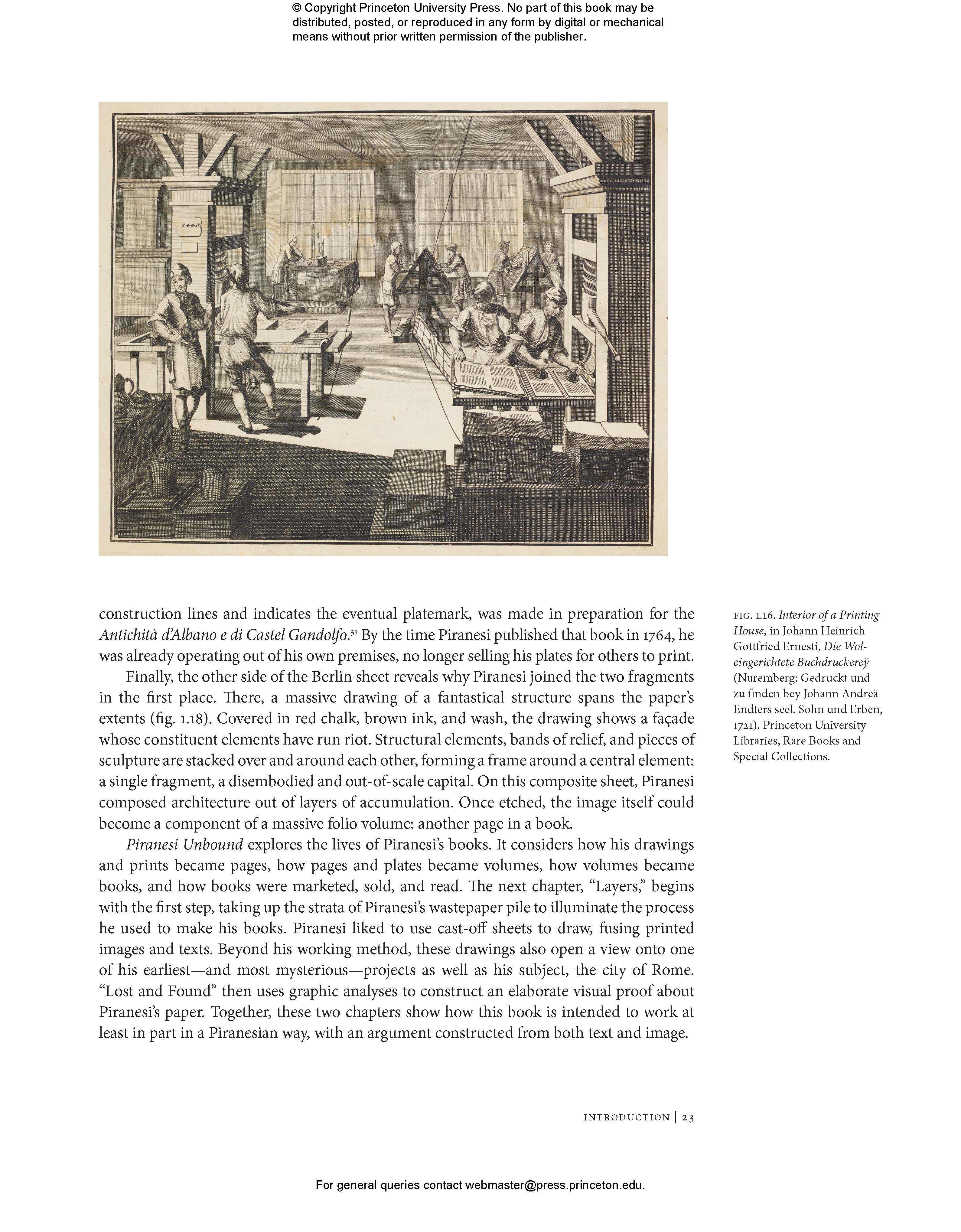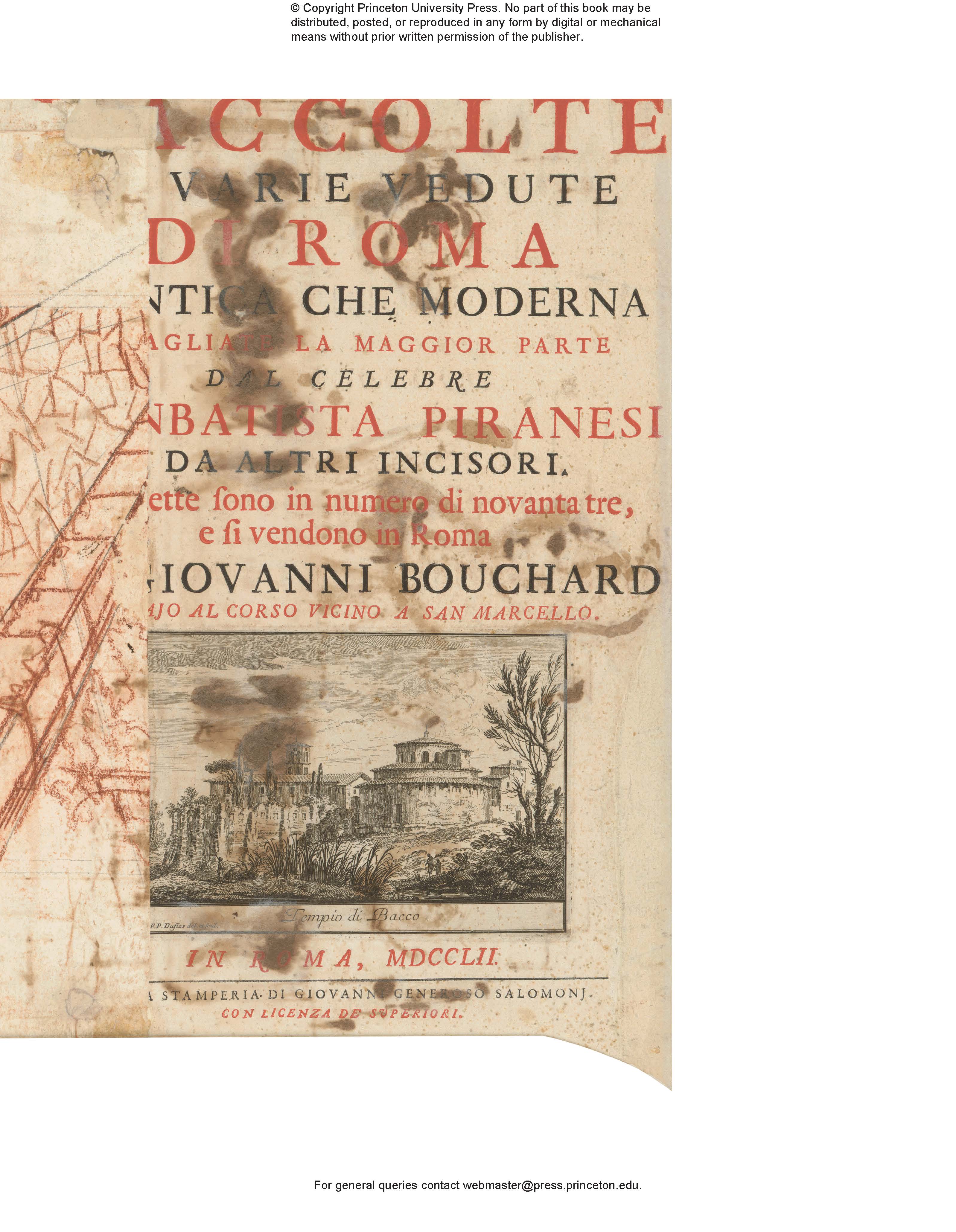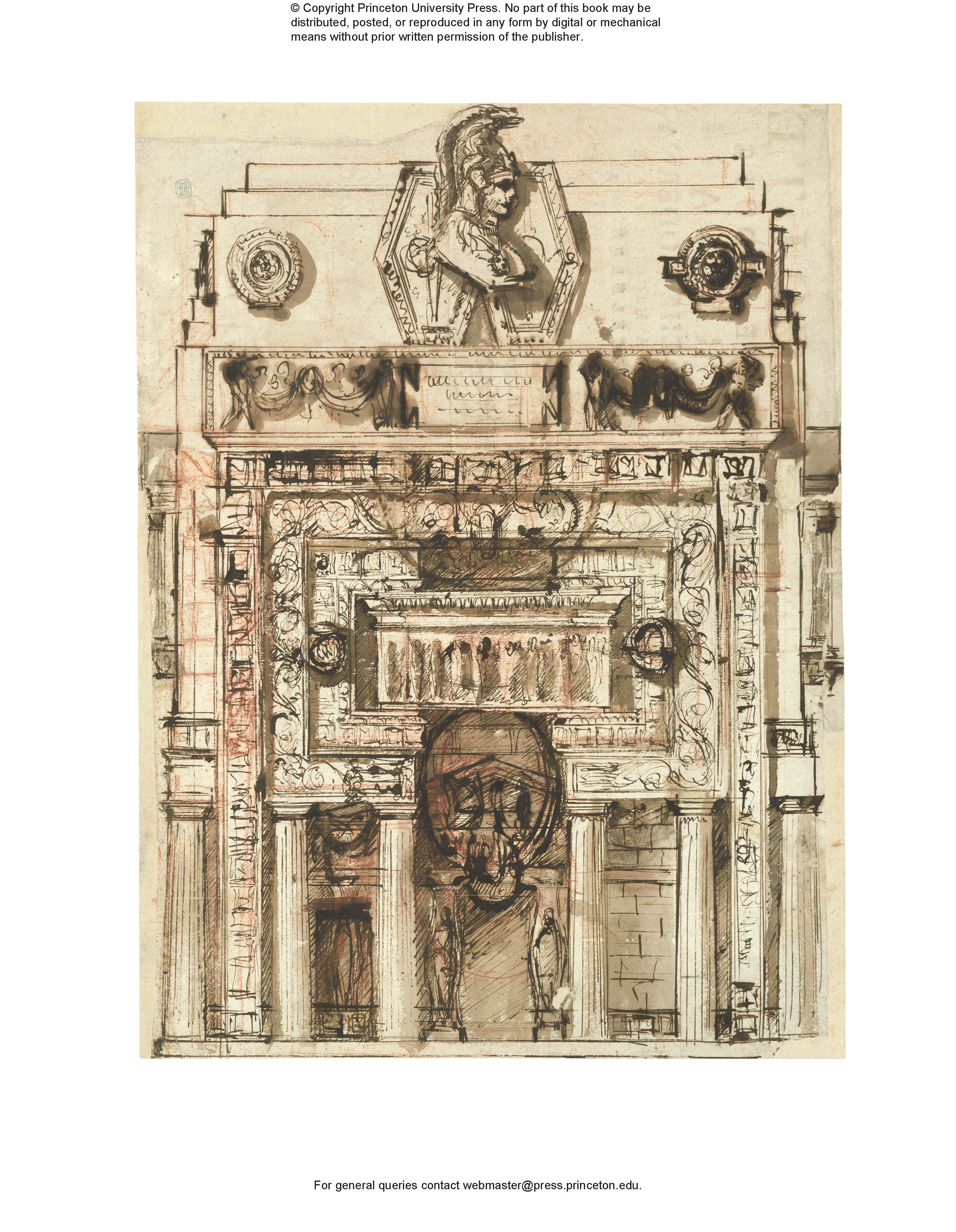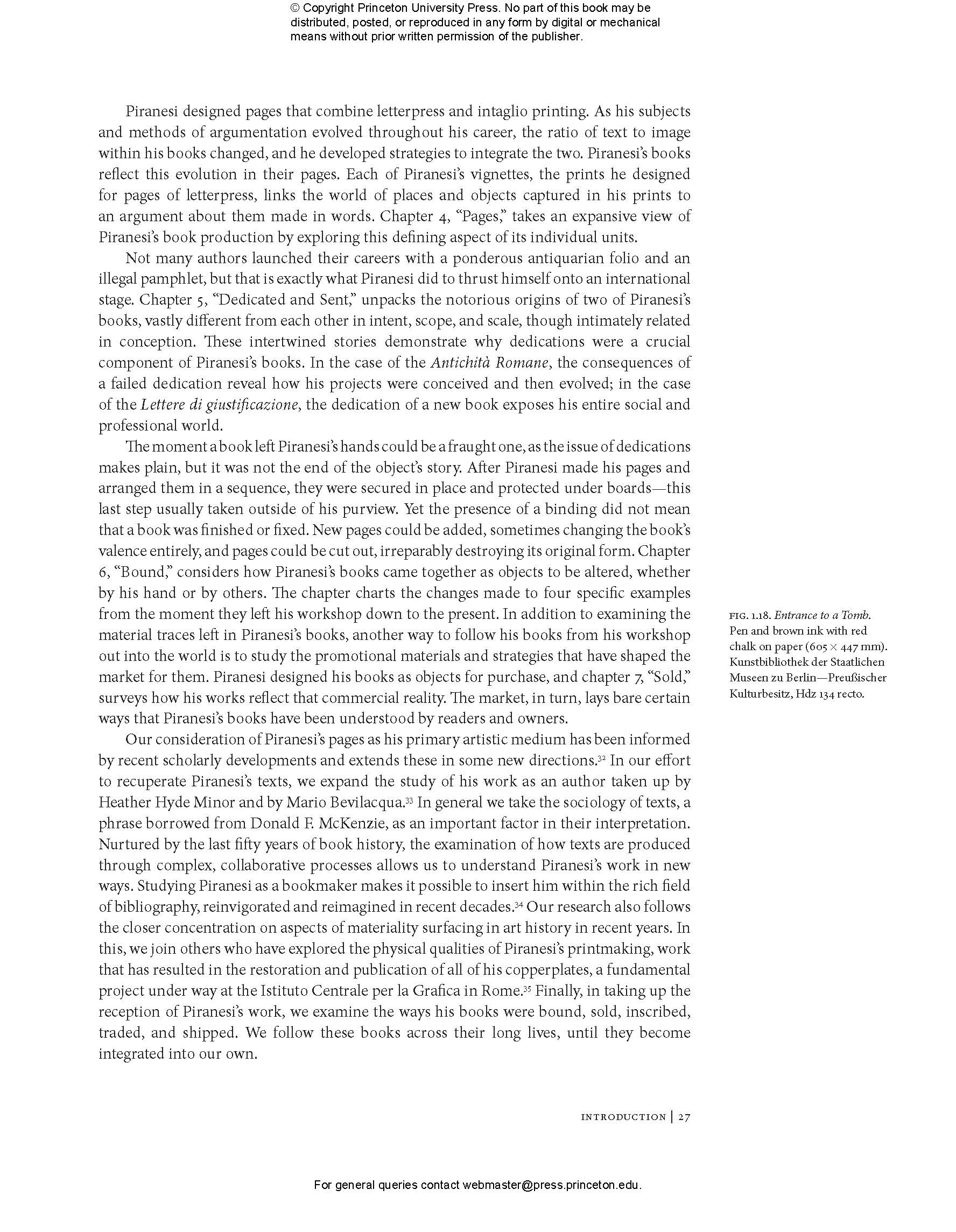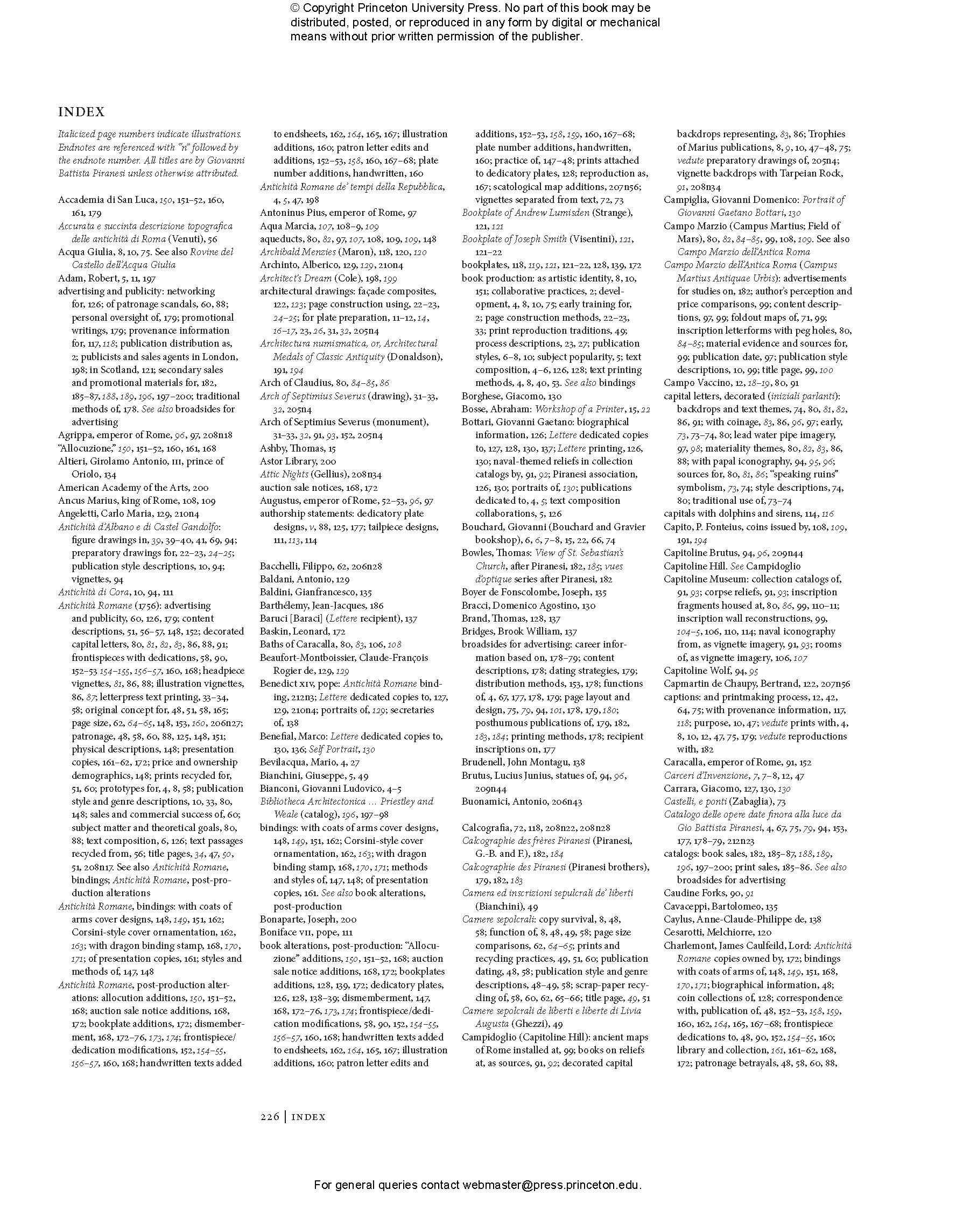A draftsman, printmaker, architect, and archaeologist, Giovanni Battista Piranesi (1720–78) is best known today as the virtuoso etcher of the immersive and captivating Views of Rome and the darkly inventive Imaginary Prisons. Yet Carolyn Yerkes and Heather Hyde Minor argue that his single greatest art form—one that combined his obsessions most powerfully and that he pursued throughout his career—was the book. Piranesi Unbound provides a fundamental reinterpretation of Piranesi by recognizing him, first and foremost, as a writer, illustrator, printer, and publisher of books.
Featuring nearly two hundred of Piranesi’s engravings and drawings, including some that have never been published before, this visually stunning book returns Piranesi’s artworks to the context for which he originally produced them: a dozen volumes that combine text and image, archaeology and imagination, erudition and humor. Drawing on new research, Piranesi Unbound uncovers the social networks in which Piranesi published, including the readers who bought, read, and debated his books. It reveals his habit of raiding the wastepaper pile for cast-off sheets upon which to draw and fuse printed images and texts. It shows how, even after his books were bound, they were subject to change by Piranesi and others as pages were torn out and added.
The first major exploration of the lives of Piranesi’s books, Piranesi Unbound reimagines the full range of the artist’s creativity by showing how it is inextricably bound to his career as a maker of books.
"A handsome treatment of [an] unheralded aspect of Piranesi’s career."—Benjamin Riley, New Criterion
"Piranesi Unbound is a beautifully made book about a maker of beautiful books. Giambattista Piranesi (1720-78) is remembered mostly for his etchings, but art historians Carolyn Yerkes and Heather Hyde Minor make a strong—and charmingly wonkish—case that his true medium was the bound volume. They’re helped enormously by the designer Yve Ludwig, who strengthens every step of their argument with vivid closeups of the maestro’s work. Her gold-on-terracotta color scheme is the icing on the cake: Ms. Ludwig evokes Piranesi’s love for red chalk and Moroccan leather in a way that suggests the Roman genius might have a living heir."—Jackson Arn, Wall Street Journal
"[Piranesi Unbound is], an academic book [that] contains plenty of visual material exploring the Italian artist’s work, and . . . dives into the world of bookmaking."—Silvia Moreno-Garcia, Washington Post
"If you liked Piranesi by Susanna Clarke, you might want to look at Piranesi Unbound by Carolyn Yerkes and Heather Hyde Minor. It's an academic book, but it contains plenty of visual material exploring the Italian artist's work, and it dives into the world of bookmaking."—Silvia Moreno-Garcia, The Independent
"Piranesi Unbound is a thoroughly researched and stimulating discursive study of Piranesi as a creator and seller of books. This will be a valuable book for students of Piranesi, book arts and patronage in Eighteenth-Century Rome."—Alexander Adams, Alexander Adams Art
"In Piranesi Unbound . . . Carolyn Yerkes and Heather HydeMinor show how books represented an alternative business model for [Piranesi], one that required technologies of production and routes of distribution that were different from those for prints. According to the authors, Piranesi the bookmaker has been shouldered aside in the literature by the suitable-for-framing hero of exhibitions and catalogues. Their Piranesi, by contrast, is to be found in libraries more often than in print cabinets. . . . This is a book lover’s book."—Joseph Connors, Journal of the Society of Architectural Historians
"By treating Piranesi’s books as a distinct and specific medium, Yerkes and Hyde Minor draw attention to a feature of early modern publications that scholarship rarely fully acknowledges: their inherent instability and ‘openness’. From Piranesi Unbound, the book emerges as a site of a continuous reconfiguration of content and printed matter, and this over the entire course of its life: from its conception, when plates are reused and content is cribbed, over its production and sale, when pages and fascicules are combined, bound and personalised, to its distribution and dispersal in collections of books and prints. . . . By casting Piranesi primarily as a bookmaker, Piranesi Unbound begins to liberate his work from his overbearing presence in its interpretation."—Maarten Delbeke, Architectural History
"A scholarly and visually rich history that . . . should appeal to fans of Giovanni Battista Piranesi. . . . A beautiful book about books."—John Hill, A Daily Dose of Architecture
"Beautifully designed and lavishly illustrated . . . the book is a testament to the kind of scholarship Piranesi stood for."—Richard Calis, International Journal of the Classical Tradition
"Piranesi Unbound occupies a special place as a volume clearly aligned with the “material turn" of art history. The coauthors, experts on architectural drawings and prints, are implicitly and productively critical of the canonical type of art historical research, concentrating specifically on what classical art history has regarded as parerga—the technical, material, and economic aspects of artistic production."—Lola Kantor-Kazocsky, CAA Reviews
"Piranesi Unbound . . . rematerialize[s] the codex as a material repository of practice"—Luisa Calè, European Romantic Review
“Written in a captivating style, this outstanding and intriguing book provokes a fascination for Piranesi’s creative pursuits in his busy, untidy, and noisy workshop.”—Mario Bevilacqua, University of Florence
